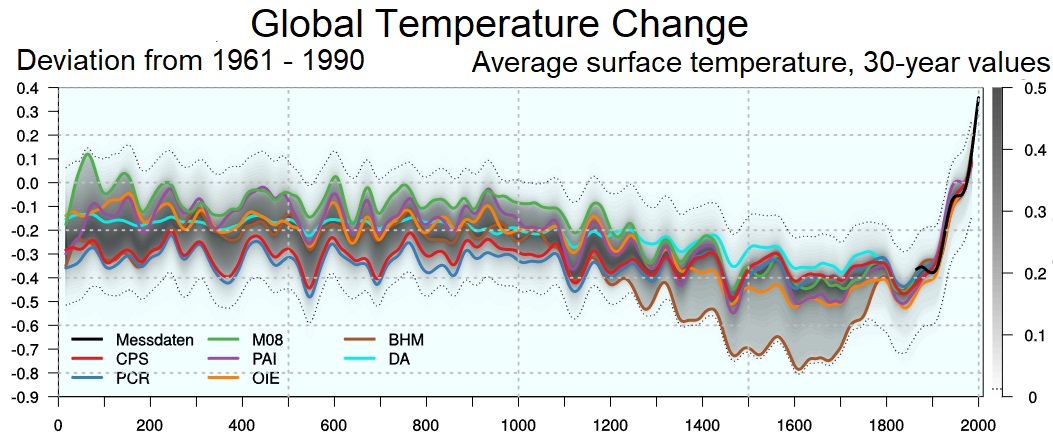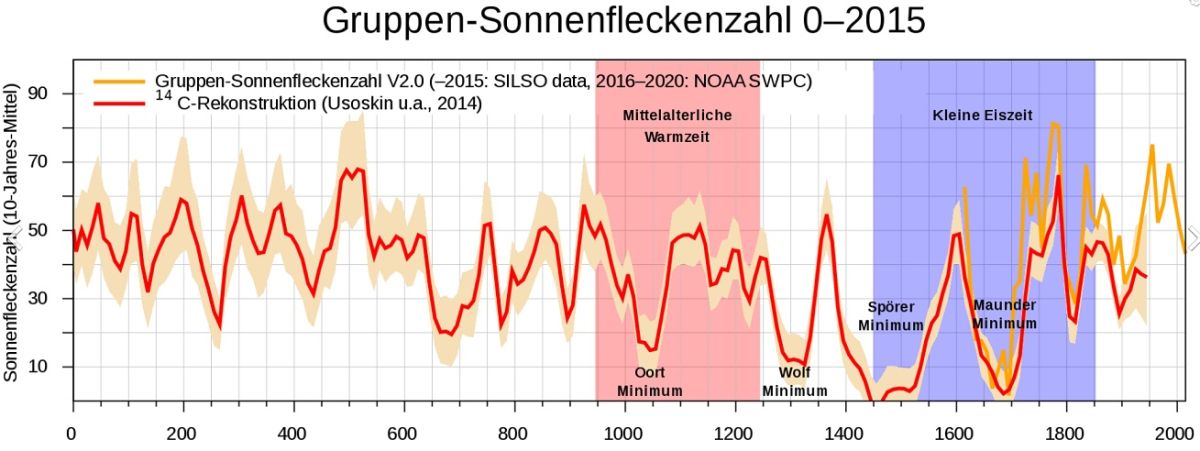Term (also known as Medieval Climatic Optimum or Medieval Climatic Anomaly) for a long period from around 900 to 1350 AD with a warm climate. The climate phenomenon occurred in different regions and at different times. This is because in other places on earth it was much colder than it is today, for example in the tropical Pacific. Temperatures in the areas affected by the warming were around 1 to 2 degrees higher than during the subsequent cold period, the Little Ice Age. In the northern Atlantic, the pack ice retreated northwards and the land glaciers partially disappeared.

Colonisation of Greenland
This warming allowed the Vikings to colonise the island of Greenland (since 986), as the Arctic Ocean was ice-free in both directions and therefore navigable. However, the myth of a green, fertile Greenland with even vineyards, which is spread by climate change sceptics in particular, is just a myth. This rumour dates back to the time when the seafarer and explorer Erik the Red (950-1003) was exiled to Greenland towards the end of the first millennium. It was bitterly cold and life was hard there and Erik invented this lie to lure compatriots from Iceland to Greenland.
Shifting wine-growing borders
The cultivation boundaries in the German low mountain ranges reached about 200 metres higher than today, so that agriculture expanded greatly in the High Middle Ages (1050-1250). The wine-growing frontier at that time was on the southern Baltic coast. Viticulture was thus possible in East Prussia, Pomerania and southern Scotland, and grain cultivation in Norway even as far as the Arctic Circle (66° north latitude). By the beginning of the 14th century, vineyards had been extended to steeper slopes, especially in Germany and France, with the Cistercian order playing a particularly important role. The Medieval Warm Period was less pronounced in other parts of the world. In some regions, temperatures were even slightly lower and in others there was no significant change.

Causes
The main reason was a particularly high level of solar radiation or increased solar activity. This led to warming of the land and water surfaces as well as the stratosphere, which in turn released the heat to the troposphere and thus the surfaces with a time delay. In addition, unusually low volcanic activity is suspected worldwide. Volcanic activity darkens and sulphurises the atmosphere and causes a colder climate. These phenomena are similar today in the context of climate change. See also climate, climate change, greenhouse effect and weather.
Sunspots: by DeWikiMan - Own work, CC BY-SA 4.0, Link
Temperature change: by DeWikiMan, based - Own work, CC BY-SA 4.0, Link
Source: WIKIPEDIA - Medieval climate anomaly
Voices of our members

The Wine lexicon helps me to keep up to date and refresh my knowledge. Thank you for this Lexicon that will never end in terms of topicality! That's what makes it so exciting to come back often.
Thorsten Rahn
Restaurantleiter, Sommelier, Weindozent und Autor; Dresden